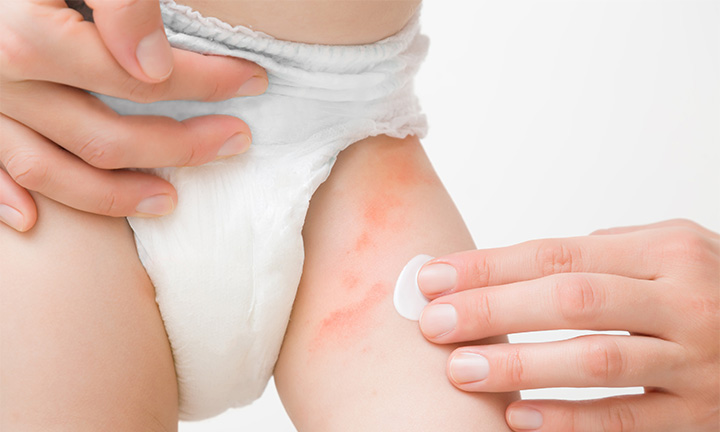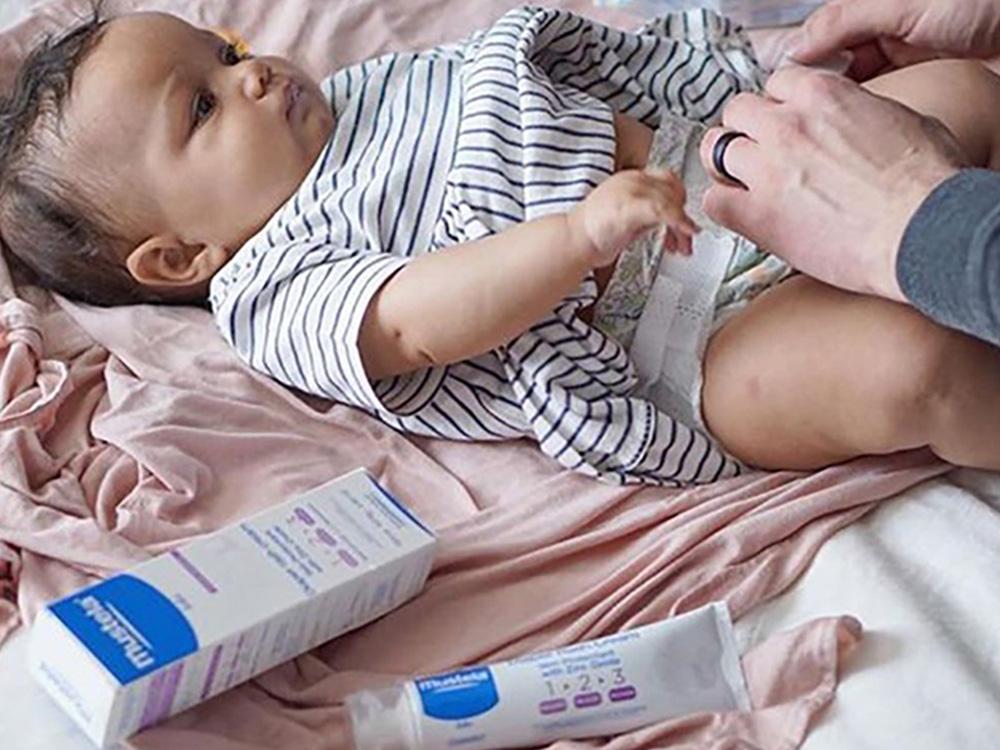Guide to Applying Diaper Rash Cream
Protecting your baby’s delicate skin during diaper changes is crucial, and diaper rash cream plays a vital role in preventing and soothing irritation. But with various types, application methods, and potential concerns, navigating diaper cream usage can feel overwhelming. This guide empowers you with a step-by-step approach, addresses common questions, and offers additional tips for optimal care
Gathering Your Essentials:
1. Choosing the Right Diaper:
- Different diaper types and their suitability for preventing or managing diaper rash (e.g., breathable diapers, disposable vs. cloth diapers).
- Factors to consider when choosing a diaper size and fit (e.g., avoiding tight-fitting diapers that can trap moisture).
- Tips for storing diapers hygienically to prevent bacterial growth.
2. Selecting the Perfect Wipes:
- Importance of fragrance-free and hypoallergenic wipes to avoid irritating sensitive skin.
- Benefits of using warm water with wipes for added comfort and cleaning.
- Considerations for eco-friendly wipe options, if desired.
3. Diaper Cream Options:
- Different types of diaper creams and their uses (e.g., zinc oxide creams for treatment, barrier creams for prevention).
- Understanding the active ingredients and potential side effects of different creams.
- Consulting your pediatrician about the best cream for your baby’s specific needs.
4. Additional Essentials:
- Benefits of using a soft washcloth (optional) for thorough cleaning.
- The role of warm water for rinsing cloth diapers (if applicable).
- Importance of having a readily available changing pad for convenience and hygiene.
5. Organization and Hygiene:
- Tips for keeping diaper changing supplies organized and easily accessible.
- Maintaining a clean changing area to prevent the spread of germs.
- Handwashing before and after each diaper change for optimal hygiene.
Preparing for Application:
1. Hygiene is Key:
- Thorough handwashing procedures before and after each diaper change to prevent germ spread.
- Importance of using clean wipes or washcloths and avoiding harsh chemicals.
- Maintaining a clean changing area and disposing of soiled diapers properly.
2. Gentle Cleansing:
- Techniques for removing stool or debris gently, minimizing irritation.
- Utilizing warm water, if needed, for rinsing cloth diapers.
- Choosing fragrance-free wipes to avoid sensitivities.
3. Drying Thoroughly:
- The importance of completely drying the diaper area before applying cream.
- Techniques for patting dry with a soft cloth or allowing air exposure for gentle drying.
- Avoiding moisture buildup that can worsen diaper rash.
4. Applying with Care:
- Starting with a small amount of cream to avoid overapplication and discomfort.
- Gently spreading the cream evenly over the entire diaper area, including folds and creases.
- Avoiding application near the genitals to prevent irritation.
5. Addressing Specific Areas:
- Paying extra attention to areas prone to irritation, such as skin folds and between the buttocks.
- Using a slightly thicker layer of cream in these vulnerable areas for enhanced protection.
- Being mindful of your baby’s comfort and avoiding rough rubbing or pulling.
Applying the Cream:

The “Less is More” Approach:
- Starting small: Begin with a pea-sized amount of cream. This might seem insufficient, but a thin layer spread evenly offers ample protection without hindering skin breathability.
- Gradual application: Avoid the temptation to pile on the cream. Add more in small increments only if needed, focusing on vulnerable areas. Overapplication can trap moisture and worsen the rash.
Spreading with Care:
- Gentle touch: Be mindful of your baby’s delicate skin. Use gentle, sweeping motions to spread the cream evenly over the entire diaper area, including skin folds and creases.
- Reaching all the nooks: Pay particular attention to areas prone to irritation, like the folds between the buttocks and thighs. Gently lift and separate skin folds to ensure thorough coverage.
- Avoiding sensitive areas: Steer clear of applying cream directly to the genitals. The natural folds provide sufficient protection in most cases.
Addressing Specific Concerns:
- Persistent redness: If redness persists despite proper application, consult your pediatrician. They might recommend a stronger cream or identify underlying causes.
- Sensitive skin: Explore hypoallergenic diaper creams or natural alternatives like coconut oil (always patch test first). Consult your pediatrician for guidance on suitable options.
- Yeast infections: If you suspect a yeast infection, your pediatrician will prescribe an antifungal cream alongside the diaper cream for effective treatment.
Additional Tips:
- Change frequently: Regularly changing diapers and promptly addressing messes are key to preventing and managing diaper rash. Aim for changes every 2-3 hours, or more frequently if needed.
- Observe your baby: Monitor your baby’s skin for signs of irritation, such as redness, bumps, or bleeding. If you notice any concerns, consult your pediatrician for personalized guidance.
- Different formulations: Choose a cream based on your baby’s needs and skin sensitivity. Options range from zinc oxide creams for treatment to hypoallergenic formulas for sensitive skin. Consult your pediatrician for recommendations tailored to your baby’s specific case.
- Petroleum jelly alternative: While commonly used, petroleum jelly offers no barrier protection and may worsen diaper rash. Opt for diaper creams specifically formulated for this purpose.
- Let air breathe: Whenever possible, allow some air exposure to the diaper area. Consider “naked time” during diaper changes to promote healing and air circulation.
Advanced Techniques:
- Treating stubborn rash: If your baby has a persistent rash, consult your pediatrician about stronger creams or additional steps. They might recommend applying cream more frequently or using a medicated barrier for enhanced protection.
- Soothing sensitive skin: For babies with particularly sensitive skin, explore hypoallergenic diaper creams or natural alternatives like coconut oil or shea butter (always patch test first on a small area to check for allergic reactions).
- Dealing with yeast infections: If you suspect a yeast infection, your pediatrician will prescribe an antifungal cream to be applied alongside the diaper cream for effective treatment.
Troubleshooting Tips:
- Cream not sticking: If the cream doesn’t adhere well, ensure the skin is completely dry before application. You can also try a thicker cream formulation for better adherence.
- Redness around application area: This might indicate an allergic reaction to the cream. Stop using it immediately and consult your pediatrician for alternative options.
- Diaper blowout: In case of a major mess, clean the area thoroughly with wipes or warm water before applying a fresh layer of cream.
Remember:
- Every baby’s skin is different, so what works for one may not work for another. If you have any concerns about your baby’s skin or suspect a more serious issue, always consult your pediatrician for personalized advice and treatment plans.
- Consistency is key: Regularly applying diaper cream, especially after each bowel movement, helps prevent





